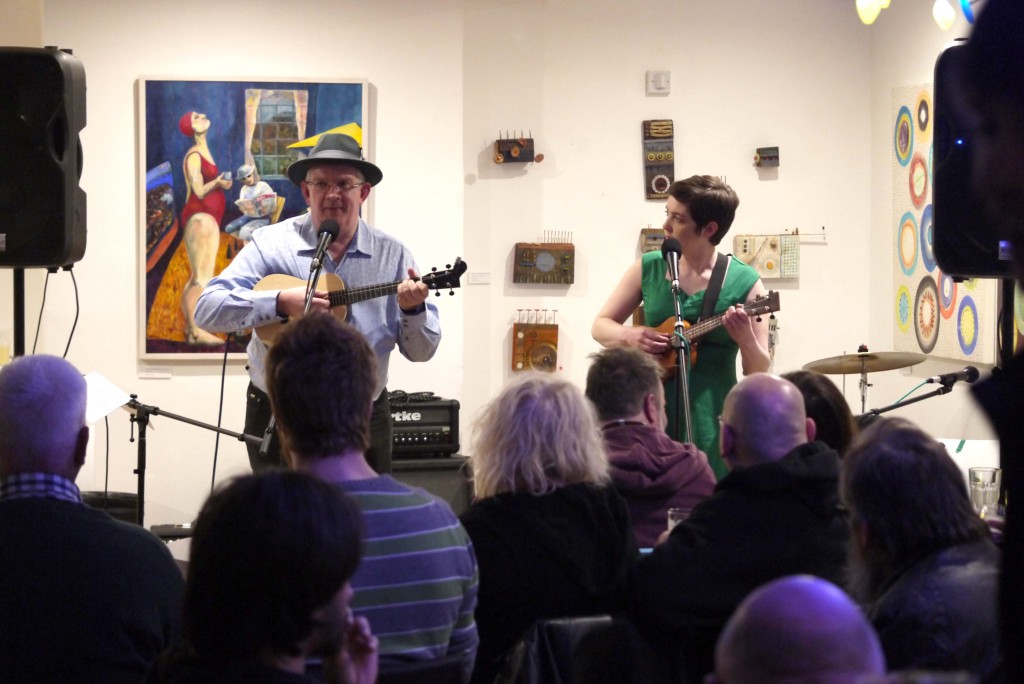I was talking to a fellow musician recently about balancing “overexposure” and “underexposure” as a performing and/or recording artist. I think it’s a very interesting area of discussion and inevitably one that will provoke all manner of responses. She was commenting how in one area of music, in her opinion the exact same artists seemed to be headlining all the main festivals and other festive events. One the one hand you could reasonably say “Let market forces dictate who is most in demand”, but I think this does raise a genuine issue of overexposure which has its own consequences.
Booking agents and festival promoters understandably want to hire artists that will put bums on seats, and they don’t call it “the music business” for not reason. This is a commercial reality and one of the side effects is that often most of what we see and hear is a repeat of what has already been seen and heard. This commercial reality means that with a few exceptions promoters will take the safe route and book the same individuals. The performers often also take what IMO is the safe route and play familiar material. Again nothing wrong with this, but it doesn’t really factor in a great number of opportunities for anything new or dynamically interesting.
In the UK, you can literally drive from one end of the island to the other in a number of hours. There is a definite limit to the number of festivals and locations you can play at in a fairly small geographical location. This would be quite different in the USA, which is of course a number of “united states” many of whom are very different. If an artist is perceived to be playing almost everywhere, the demand for them is inevitably diminished through “overexposure” If they are almost never seen they run the danger of “underexposure” In the conversation my friend commented that she stopped attending festivals as she rarely saw or heard anything new, so in her opinion it was no longer good value for money. In these times pricing has become a big factor with the cost of travel and accommodation now being quite high in the UK.
Robert Cialdini – The Scarcity principal
A really well respected authority on the subject of persuasion “Robert Cialdini” talks about “the scarcity principle” as one of the six key elements in human behavioral responses.
Principle #6: Scarcity
In fundamental economic theory, scarcity relates to supply and demand. Basically, the less there
is of something, the more valuable it is. The more rare and uncommon a thing, the more people
want it. Familiar examples are frenzies over the latest holiday toy or urban campers waiting
overnight to pounce on the latest iPhone.
o Experiment conducted
In 1985, the Coca-Cola Company made their infamous switch from their traditional formula to
the sweeter formula “New Coke.” Their taste tests indicated that 55% preferred the new Coke
over the old. Most of those tests were blind, but some participants were told which formula was
new and which was the original. Under those conditions, the preference for new Coke increased
6%.
Despite the taste tests, the switch to new Coke triggered incredible backlash against it. Time
magazine later dubbed it “the marketing fiasco of the decade.”
“The company must have looked at the 6% difference between blind and non-blind preferences
and said to themselves ‘Oh, good, this means that when people know that they’re getting
something new, their desire for it will shoot up.’”
“In fact, what that 6% really meant was that when people know what it is they can’t have, their
desire for it will shoot up. Later, when the company replaced the traditional recipe with the new
one, it was the old Coke that people couldn’t have, and it became the favorite.”
Robert Cialdini
Another Farewell Tour?
The famous “farewell tour announcements” work using Chialdini’s principle and are well known strategies to regenerate major audiences. This is a perfect example of the scarcity princile in action. Festivals and events that announce their final trow of the dice, inevitably generate increaed attention from using this principle. Sometimes such acts and events truly have called in a day and sometimes it’s a marketing ploy of course. Numerous artists including The Eagles and Phil Collins and Cream have used this farewell tour tactic to boost ticket sales. However, Cream did wait a respectable 37 years before playing again.
In marketing “difference dictates” For example, if the exact same artists appeared at the same event, then geography and price mostly become the main variable factors. Of course, the artists are only one part of the attraction for some events. Others can be meeting up socially and whether there’s a good supply of beer on tap! Often music festivals leverage the same artists to try to generate interest and sometimes events are cancelled due to lack of headliner availability.
When there’s a lack of scarcity, there’s ultimately increasingly less interest. Despite the sentiment in the song “I wish it could be Christmas every day” if that were true then it would no longer remain a unique once a year event. Every day would essentially be the same as every other day, so Christmas would no longer stand out as a special day for many.
Playing only for exposure?
Another regular topic among artists is the question of playing only for exposure also known as playing for free. The term “for free” many means that there is no financial exchange, but there may be many other benefits that are as or more valuable. Such benefits include being able to network during the event, photographic opportunities and getting good live video. That said any artist wanting to earn a living from music needs to generate predictable income. The key word here is “predictable” A lack of predictability in income streams can create all manner of problems. Some artists and promoters are well intentioned but delusional when it comes to making basic business decisions and this can cause them major long-term problems.
Getting useful exposure and “playing the long game”
With my own band “The Small Change Diaries” we received our first overseas festival invitation on the basis of reputation and online presence. We have since had other overseas enquiries and I have made sure we don’t appear as a what many may think of as typical ukulele band as that’s not really our target audience. We also play 100% original music which is not a safe bet in terms of audience reactions. Martin Simpson paid me the highest compliment by saying “You really don’t sound like anyone else”
With the band, I make sure that everything we put out was of good quality and there were no shaky camera videos taken on IPhones! Personally, I would never want to reply only on music for an income and professional artists I know comment that this is not exactly an easy life. The balance again is maintaining some exposure in the public domain but not oversaturating the market so you appear everywhere and lose impact. Once again Robert Cialdini’s observations are worth bearing in mind. This is IMO all about “playing the long game” and that means careful investment of time and money. Inevitably there are major lessons along the way of course.
Online video
Another challenge is the increasing amount of material posted online on video platforms, especially YouTube. If you put everything online members of the public can think “I’ve seen that set” and not bother to see you play live. Kate Bush pleaded with her audience not to video her string of shows to maintain the scarcity element and of course one fan couldn’t resist. Artists who post everything online also can create problems for themselves in terms of overexposure.
Final thoughts and a counter example
Interestingly there is a counter example to all of this in that an increasing number of popular artists make EVERY SHOW available to their fans. You can literally buy every show of Springsteen’s “The River” on CD, high definition audio and mp3, literally hundreds of hours of listening. Artists like Nick Cave have technology that in some cases allows you to have a recording of the show directly after you have attended it. These are exceptions to “the scarcity principle”
Of course, the other extreme is underexposure which is equally problematic, but that’s the subject for another blog
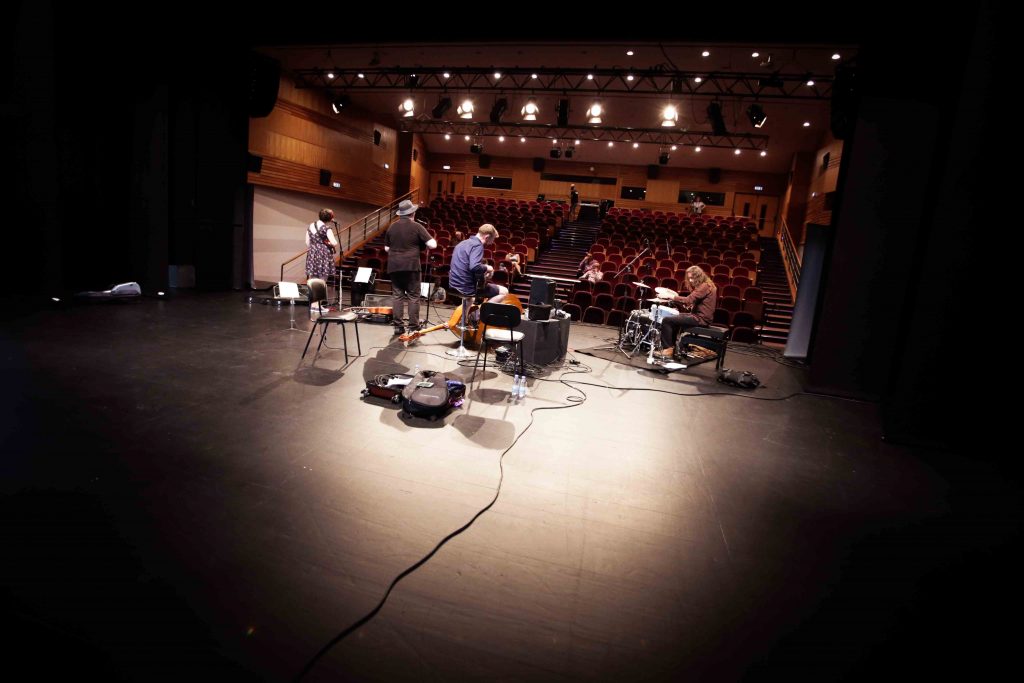
Setting up for the main stage at The Lagoa Guitar Festival 2016
Finally this is not a new topic and despite some folks dismissing the whole subject out of hand, its been written about extensively from many angles and perspectives. Thanks for all the private messages about this and those who have contributed in a mature way to the discussion

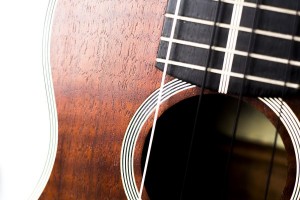 I was reflecting today on the importance and difference of “working on the business” and “working in the business” Many artists who are self employed can miss the real need to “work on the business” and learn about developing business skills which will be a key part of any overall long term success. Often people can be so busy working in the business they don’t allocate time to work on the business. You can always spot such folks as they well always cry “I don’t have time for X and Y” and this is usually because they have not planned ahead and factored in how to balance time and money. Many artists can be extremely busy, but financially impoverished and emotionally exhausted as they have yet to take a step back and look at the full consequences of their actions
I was reflecting today on the importance and difference of “working on the business” and “working in the business” Many artists who are self employed can miss the real need to “work on the business” and learn about developing business skills which will be a key part of any overall long term success. Often people can be so busy working in the business they don’t allocate time to work on the business. You can always spot such folks as they well always cry “I don’t have time for X and Y” and this is usually because they have not planned ahead and factored in how to balance time and money. Many artists can be extremely busy, but financially impoverished and emotionally exhausted as they have yet to take a step back and look at the full consequences of their actions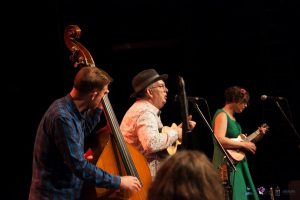 This current band has now been going for two and a half years. Its been a lot of work and a massive learning curve in strategic thinking. Its also for the most part been a great deal of fun and at times a genuine baptism of fire, which is IMO no bad thing. When we had our first BBC Radio play by Alan Raw on BBC Introducing he commented “This band is everywhere, on Facebook, on Twitter, online and on bandcamp” This was no coincidence, when deciding on the name of the band I also ensured that the online presence and social media were also fully in place. Whether we like it or not, social media is now key to marketing. With the advent of YouTube and Facebook, there has never been a better time for artists to connect directly with the public. I spend a significant time each week ensuring that these mediums are up to date. People can bemoan the amount of time needed for social media marketing, but our biggest gig to date came from a promoter noticing the band’s online presence…
This current band has now been going for two and a half years. Its been a lot of work and a massive learning curve in strategic thinking. Its also for the most part been a great deal of fun and at times a genuine baptism of fire, which is IMO no bad thing. When we had our first BBC Radio play by Alan Raw on BBC Introducing he commented “This band is everywhere, on Facebook, on Twitter, online and on bandcamp” This was no coincidence, when deciding on the name of the band I also ensured that the online presence and social media were also fully in place. Whether we like it or not, social media is now key to marketing. With the advent of YouTube and Facebook, there has never been a better time for artists to connect directly with the public. I spend a significant time each week ensuring that these mediums are up to date. People can bemoan the amount of time needed for social media marketing, but our biggest gig to date came from a promoter noticing the band’s online presence…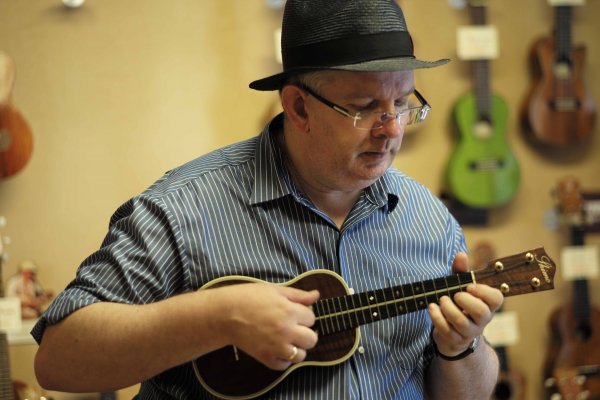 Whether we like it or not, we are now all in the computer and internet era. If you avoid spending time using these tools and mediums you are with respect pretty optimistic (many might say delusional) about marketing your services. I have often quoted the old adage “You never get a second chance to make a first impression” This is especially true with an online presence.
Whether we like it or not, we are now all in the computer and internet era. If you avoid spending time using these tools and mediums you are with respect pretty optimistic (many might say delusional) about marketing your services. I have often quoted the old adage “You never get a second chance to make a first impression” This is especially true with an online presence. 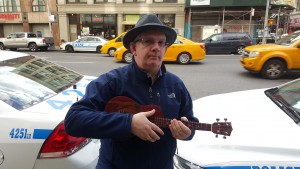 Deciding how to invest time and money and when to do so, is a real skill. I blogged recently on a colleague who was seeking music tuition and was finding it almost impossible to get a tutor to reply to his requests for help. These tougher economic mean that we all need to work smarter and harder to maintain viability. Note I say “viability” rather than “success” as its pretty tough out there at present. this means making sure that you can cost your time properly so that all the key tasks receive an appropriate amount of attention.
Deciding how to invest time and money and when to do so, is a real skill. I blogged recently on a colleague who was seeking music tuition and was finding it almost impossible to get a tutor to reply to his requests for help. These tougher economic mean that we all need to work smarter and harder to maintain viability. Note I say “viability” rather than “success” as its pretty tough out there at present. this means making sure that you can cost your time properly so that all the key tasks receive an appropriate amount of attention.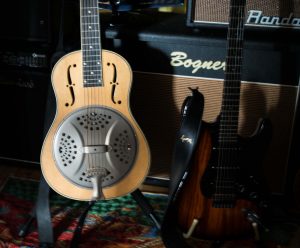 There’s an old saying “Buy cheap, buy twice” I’m mindful that everyone will have different budgetary constraints, but in my experience its always smart to get the best gear you can afford. I have talked about the difference between musical instruments and “instrument shaped objects” Yes you can but a ukulele for thirty quid, but the chances are that there will be massive compromises in how it’s made. These days there are some great instruments which are affordable to most folks and its worth saving up to get something that will stand the test of time. Similarly with amplification there are many great cost effective options. After all with music its all about how you sound, so anything that will help you sound better can be no bad thing can it? A great source of information for this aspect is Barry Maz’s “
There’s an old saying “Buy cheap, buy twice” I’m mindful that everyone will have different budgetary constraints, but in my experience its always smart to get the best gear you can afford. I have talked about the difference between musical instruments and “instrument shaped objects” Yes you can but a ukulele for thirty quid, but the chances are that there will be massive compromises in how it’s made. These days there are some great instruments which are affordable to most folks and its worth saving up to get something that will stand the test of time. Similarly with amplification there are many great cost effective options. After all with music its all about how you sound, so anything that will help you sound better can be no bad thing can it? A great source of information for this aspect is Barry Maz’s “

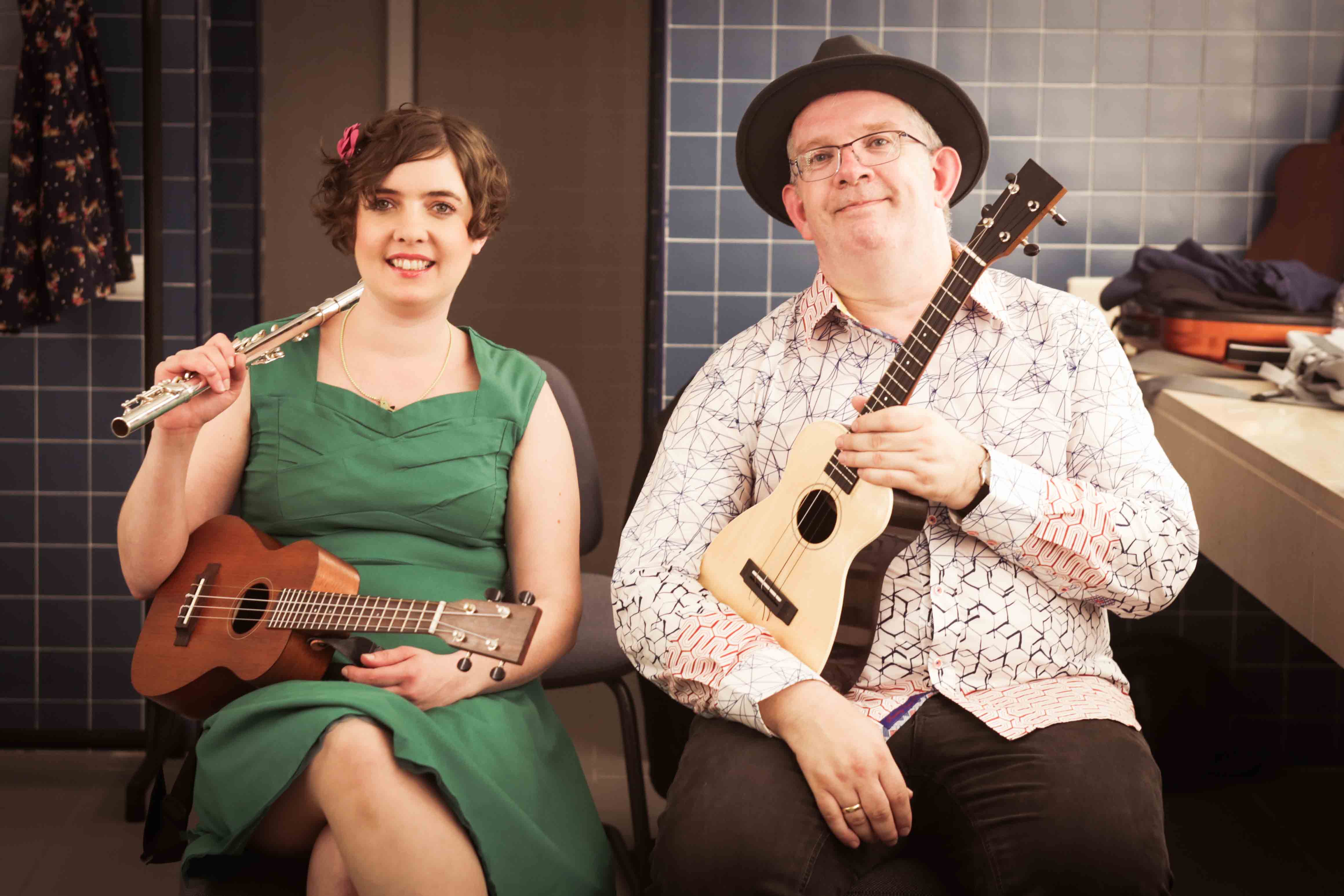
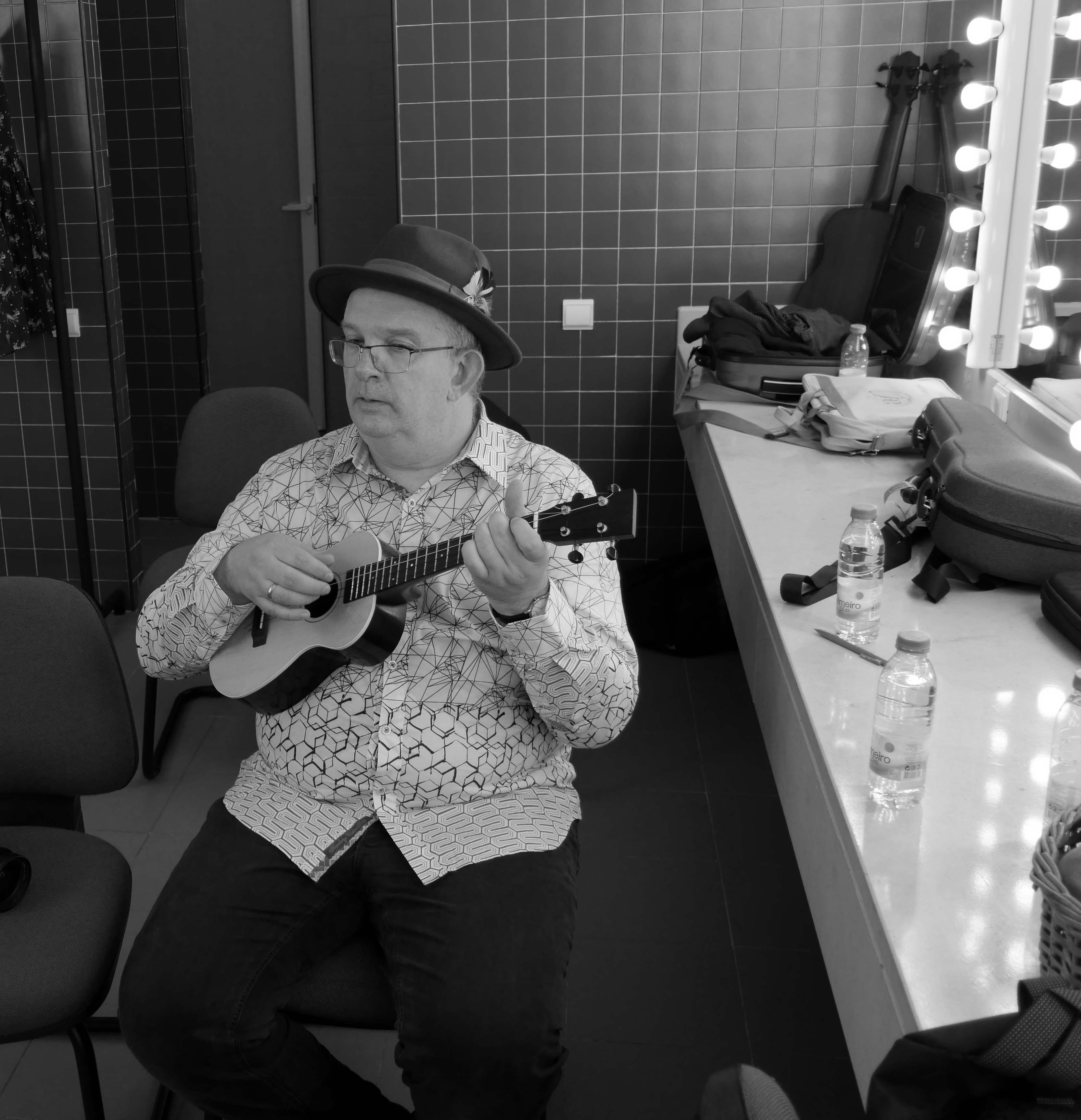
 On stage there are endless moving parts and the possibility of “a fuck up factor” is always surprisingly high. To date I have learned two main lessons from live gigs. The first is regardless of what happens, carry on playing and singing. The second is that even it a song goes “off road” it almost all cases NOBODY NOTICES except the musicians on stage! I recently looked at some video of a live Small Change Diaries performance and was really pleasantly surprised at how well the set was played and the overall look of the band. It’s a totally different experience being in the audience, than being on stage.
On stage there are endless moving parts and the possibility of “a fuck up factor” is always surprisingly high. To date I have learned two main lessons from live gigs. The first is regardless of what happens, carry on playing and singing. The second is that even it a song goes “off road” it almost all cases NOBODY NOTICES except the musicians on stage! I recently looked at some video of a live Small Change Diaries performance and was really pleasantly surprised at how well the set was played and the overall look of the band. It’s a totally different experience being in the audience, than being on stage.
 When I say “musical refinements” this includes means figuring out what equipment to use and how to use it as well as developing performing the actual material. It’s all about the details that create the best end result.
When I say “musical refinements” this includes means figuring out what equipment to use and how to use it as well as developing performing the actual material. It’s all about the details that create the best end result.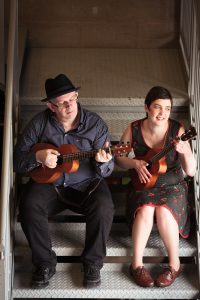 Solo, duo and band rehearsals are all different and all essential. I schedule solo practice on a daily basis and Jessica Bowie and I meet every week as a duo to work on and refine material. We have worked in this way for almost three years and this maintains creative momentum for producing new music. It continues to be a fascinating process and once we have worked up songs, we take them to the full band to sort final arrangements.
Solo, duo and band rehearsals are all different and all essential. I schedule solo practice on a daily basis and Jessica Bowie and I meet every week as a duo to work on and refine material. We have worked in this way for almost three years and this maintains creative momentum for producing new music. It continues to be a fascinating process and once we have worked up songs, we take them to the full band to sort final arrangements.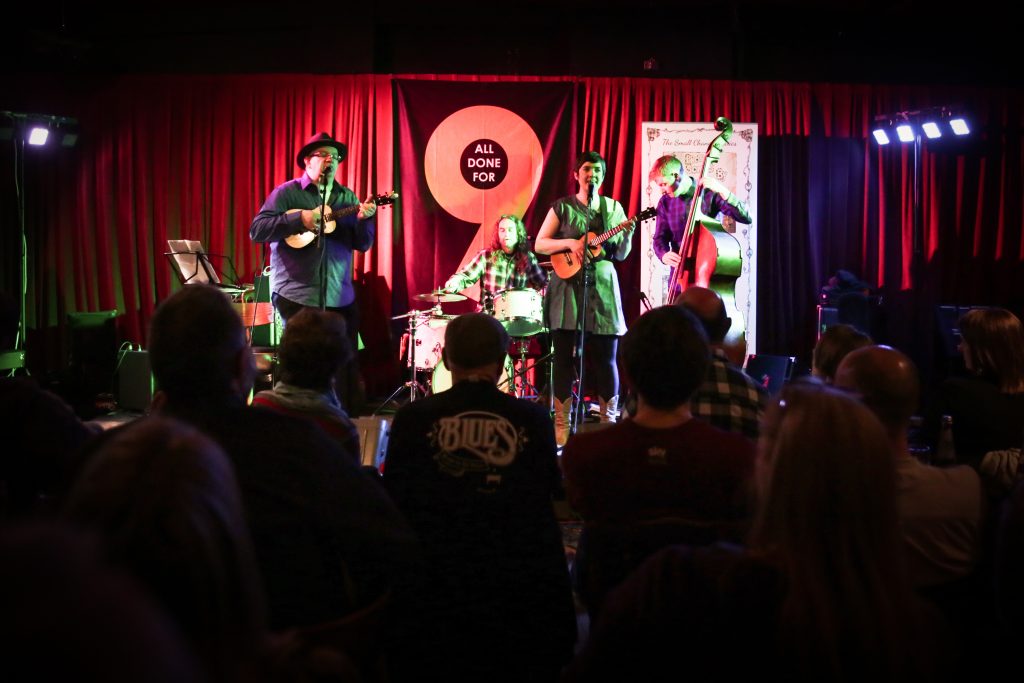
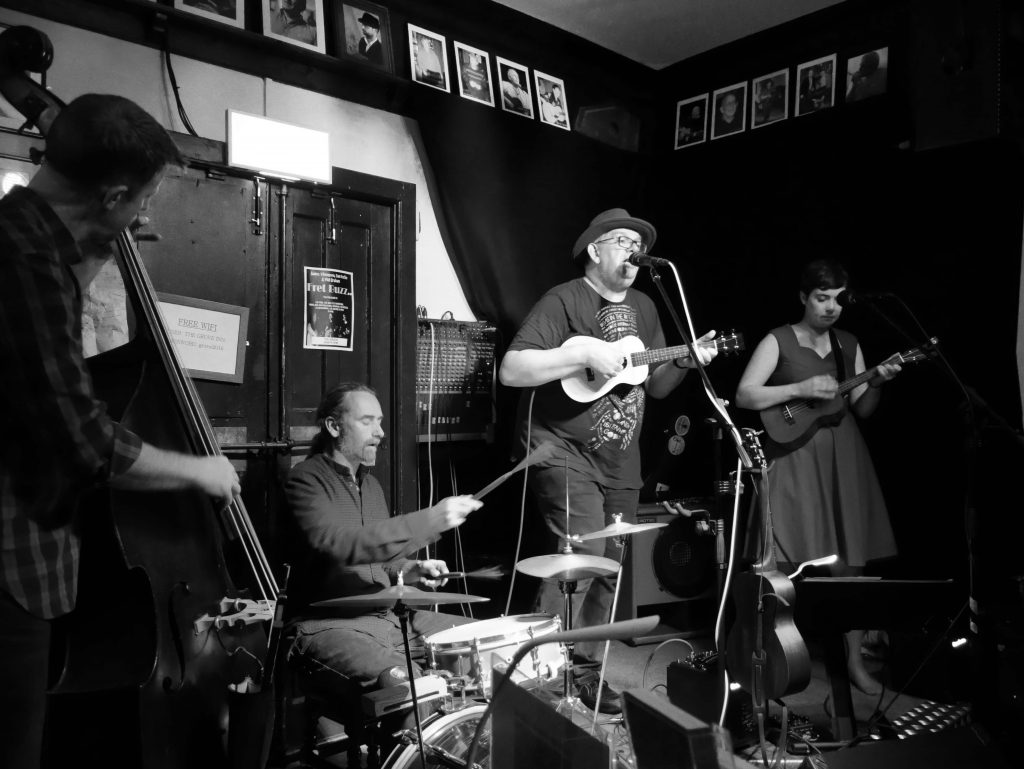
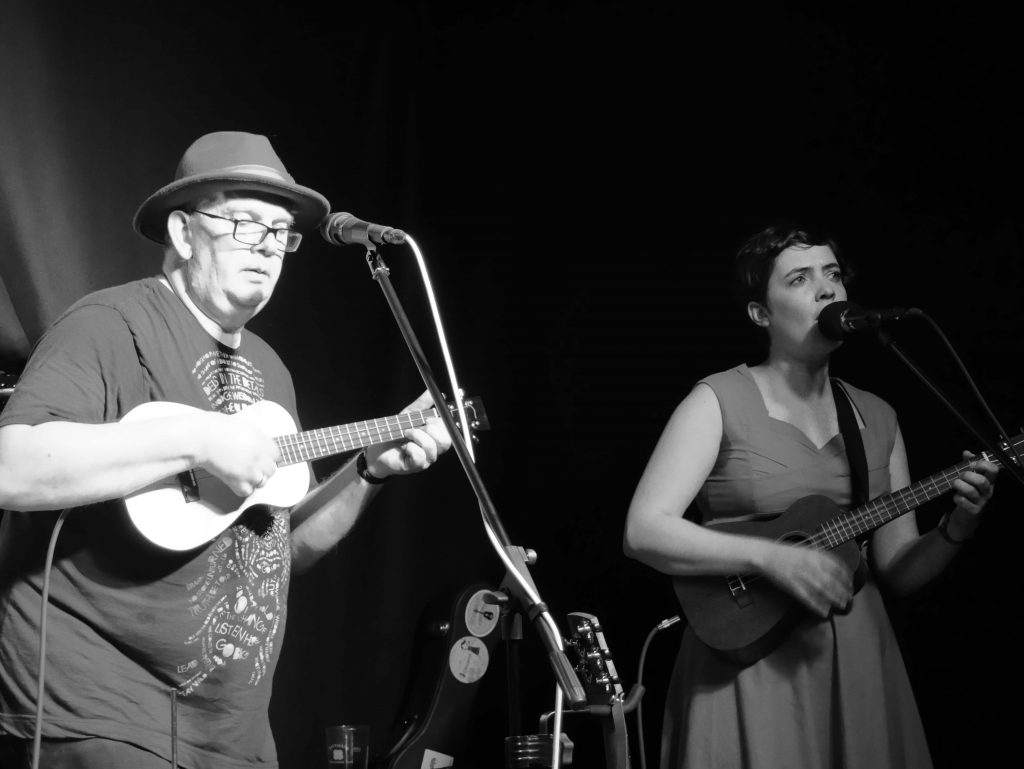
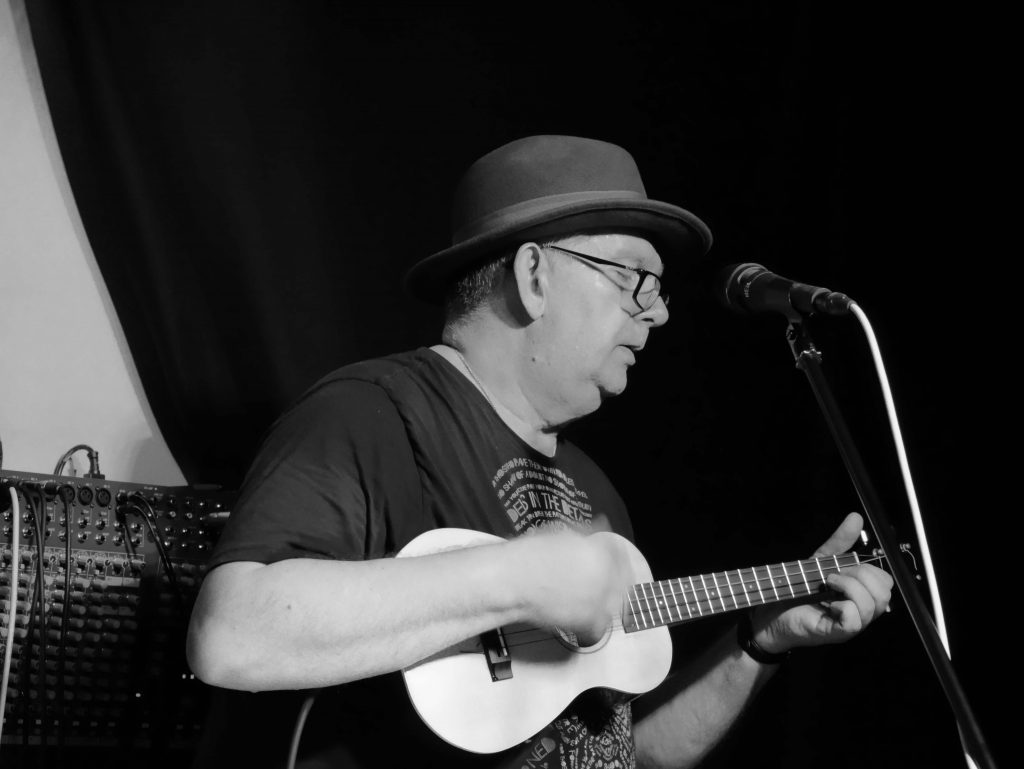

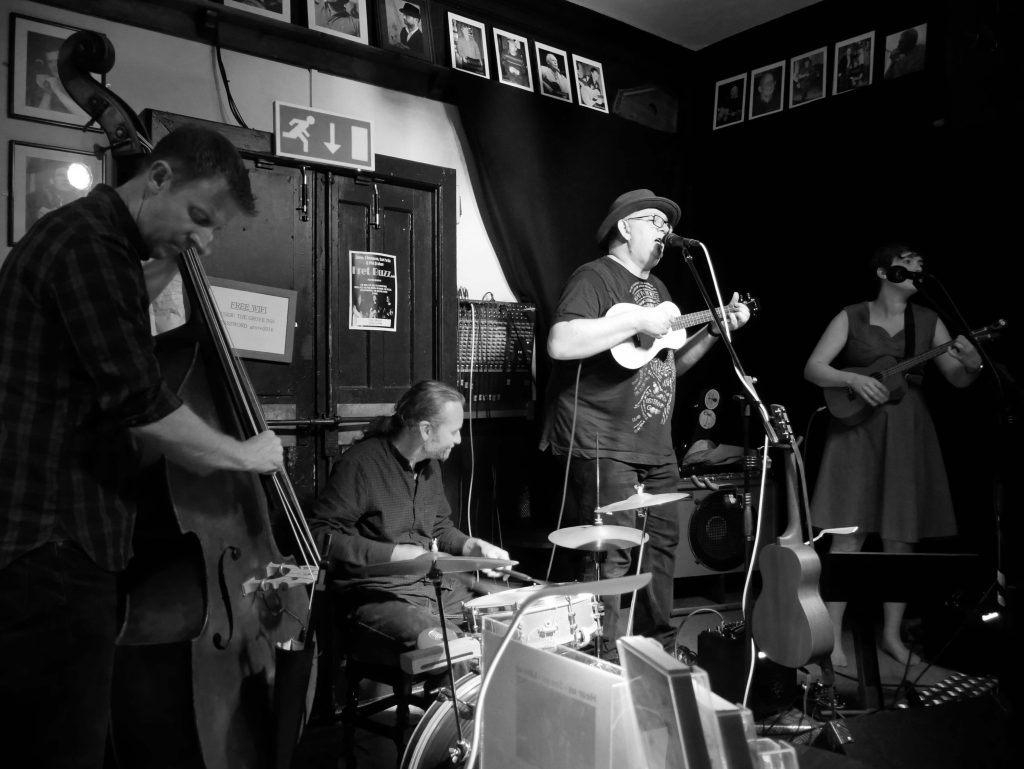
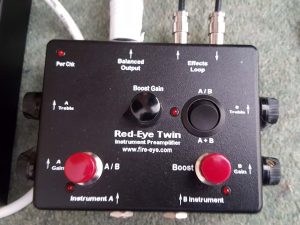 Perhaps one of the simplest solutions when playing the ukulele is to DI the instrument straight into the PA. This can work, BUT of course it depends massively on the quality of the DI box, the leads to the PA (yes leads can vary massively) and ultimately “the human factor” The last element can make the biggest difference of course, but this article assumes a basic level of competence for such scenarios! Over the years I have tried all manner of DI boxes and preamps and have discovered that there is a massive difference between different units. The very best ones are Fire Eye Red units and these are made in Austin Texas and built to the highest standards. Not only are they built like tanks, but they simply sound better than everything else I have come across. Our producer and longstanding tour manager for many established artists such as Ali Campbell agrees fully with this view. I blogged on Fire Eye units previously here –
Perhaps one of the simplest solutions when playing the ukulele is to DI the instrument straight into the PA. This can work, BUT of course it depends massively on the quality of the DI box, the leads to the PA (yes leads can vary massively) and ultimately “the human factor” The last element can make the biggest difference of course, but this article assumes a basic level of competence for such scenarios! Over the years I have tried all manner of DI boxes and preamps and have discovered that there is a massive difference between different units. The very best ones are Fire Eye Red units and these are made in Austin Texas and built to the highest standards. Not only are they built like tanks, but they simply sound better than everything else I have come across. Our producer and longstanding tour manager for many established artists such as Ali Campbell agrees fully with this view. I blogged on Fire Eye units previously here – 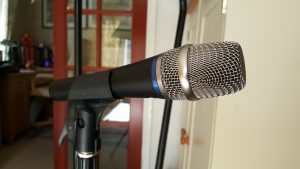 Another simple solution is to simply mic the ukulele. This removes the need for pickups, DI boxes, preamps, amps etc. It’s an attractive simple solution and many musicians swear by it. The old standard industry SM58 and SM57 mics have worked for decades. As with all solutions there will always be a trade off in many respects. In this instance the performer is limited in terms of movement on stage, but it’s simple and simple is no bad thing! Move close to increase volume, move away to reduce volume. Personally I prefer Heil mics, which to my ears sound better than SM58S.
Another simple solution is to simply mic the ukulele. This removes the need for pickups, DI boxes, preamps, amps etc. It’s an attractive simple solution and many musicians swear by it. The old standard industry SM58 and SM57 mics have worked for decades. As with all solutions there will always be a trade off in many respects. In this instance the performer is limited in terms of movement on stage, but it’s simple and simple is no bad thing! Move close to increase volume, move away to reduce volume. Personally I prefer Heil mics, which to my ears sound better than SM58S.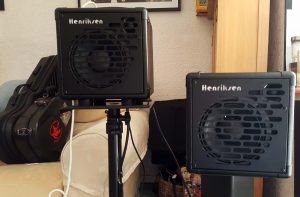 I have spent 18 months researching acoustic amp options. Clearly I am not the only person looking into this. Jake Shimabukuro was also asking about this on social media. Up until recently I would only use Schertler Unico units. These are now no longer in production and I suspect one reason is that they are pretty expensive for many working musicians and they are heavy! I have a classic Unico and a Unico Deluxe. Crucially these don’t colour the sound and simply reproduce the sonic quality of the instrument. I have owned AER, Marshall and other respectable units that are perfectly functional but don’t sound as great. In recent weeks I tried out and bought a Henriksen Bud amp with an extension cab. To say that I am pleased with this unit is an understatement. The Bud unit is a dream to work with. It sounds fantastic and is half the weight of the Schertler. The best combination is using the Bud and the Schertler in combination. This gives a big sound with lots of headroom and again crucially just amplifies the instrument, so you hear the natural acoustic sound only louder.
I have spent 18 months researching acoustic amp options. Clearly I am not the only person looking into this. Jake Shimabukuro was also asking about this on social media. Up until recently I would only use Schertler Unico units. These are now no longer in production and I suspect one reason is that they are pretty expensive for many working musicians and they are heavy! I have a classic Unico and a Unico Deluxe. Crucially these don’t colour the sound and simply reproduce the sonic quality of the instrument. I have owned AER, Marshall and other respectable units that are perfectly functional but don’t sound as great. In recent weeks I tried out and bought a Henriksen Bud amp with an extension cab. To say that I am pleased with this unit is an understatement. The Bud unit is a dream to work with. It sounds fantastic and is half the weight of the Schertler. The best combination is using the Bud and the Schertler in combination. This gives a big sound with lots of headroom and again crucially just amplifies the instrument, so you hear the natural acoustic sound only louder.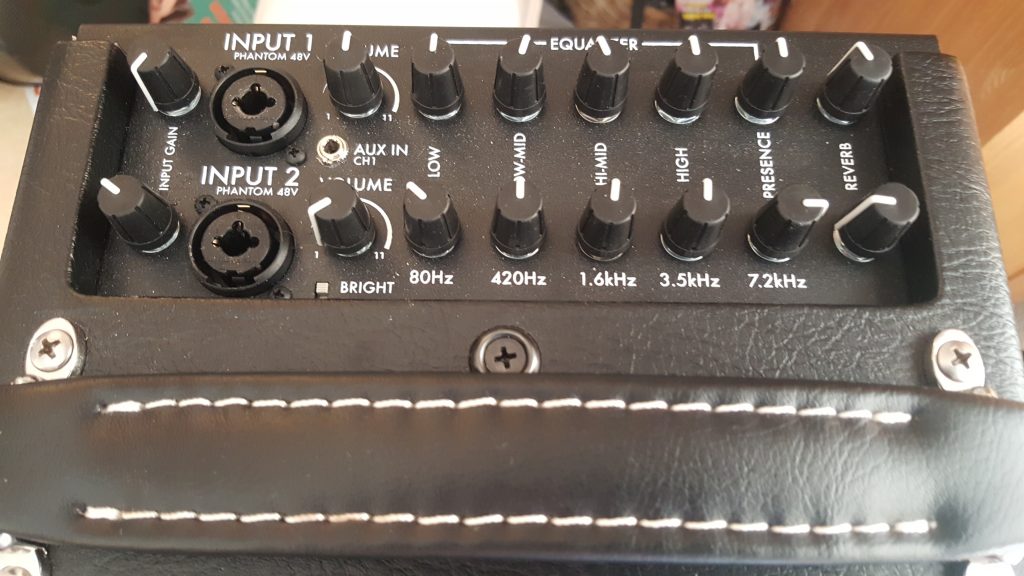
 The reality of playing live is quite a different experience than being in a rehearsal situation. Our producer Carl Rosamond regularly comments “One live appearance is worth 10 rehearsals” and in my view he is 100% correct!
The reality of playing live is quite a different experience than being in a rehearsal situation. Our producer Carl Rosamond regularly comments “One live appearance is worth 10 rehearsals” and in my view he is 100% correct!